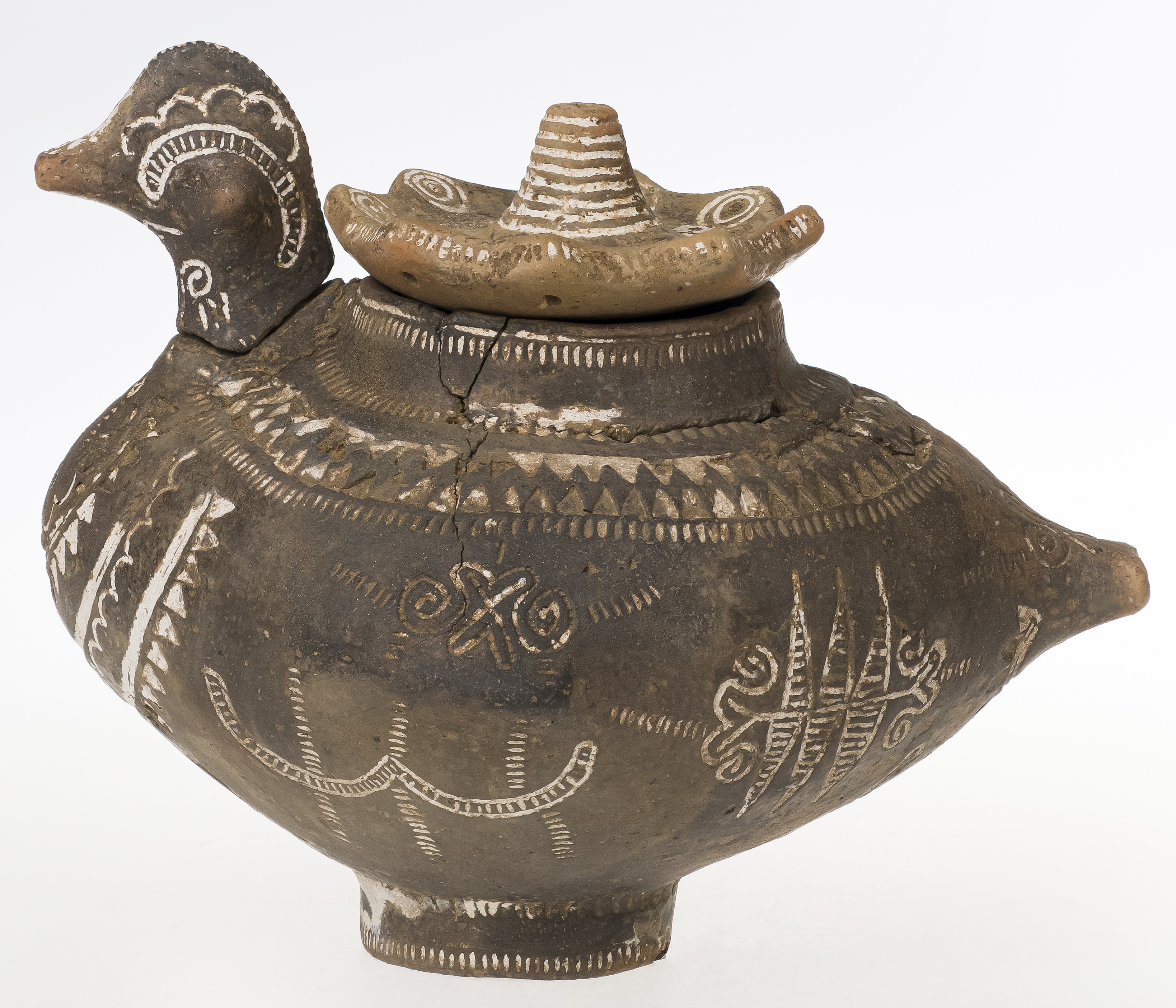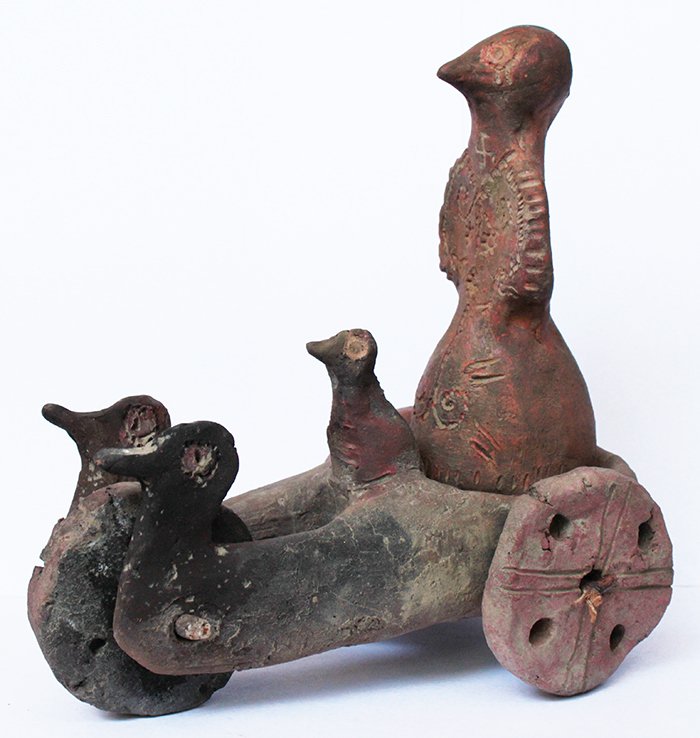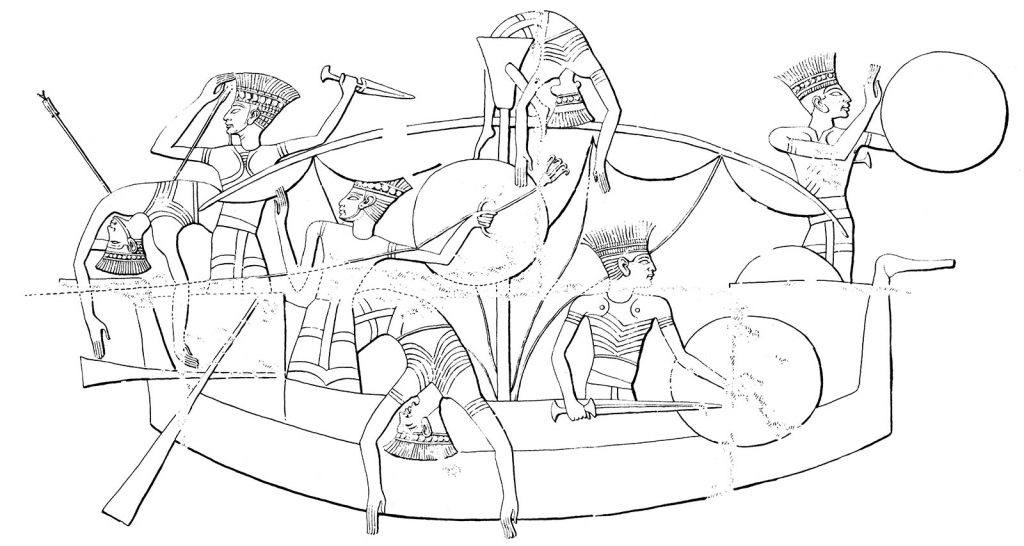Aspurg
Banned
- Messages
- 661
- Reaction score
- 233
- Points
- 0
- Ethnic group
- Bædzænæg
- Y-DNA haplogroup
- E-A24070
- mtDNA haplogroup
- I1a1a
I have prevailed.
However I might add that of all Carpatho-Danubian vultures Vatina was more Maros/Mokrin derived where E-V13 was not found, so I think we should focus more on Paraćin, Verbicioara and others.
Quote Originally Posted by Huban View Post
Belegiš II might be the key but for completely different reasons.
It seems we already have Gáva-Holigrady aDNA finds, in Y-DNA and autosomally. These finds demonstratively disqualify vast majority of E-V13 clades from having spread with the Gáva-Holigrady. And that, bar these younger expansive groups, E-V13 has nothing to do whatsoever with any sort of Urnfield culture. It seems E-CTS9320 and E-FCG11451 were involved with Gava in a secondary role, and it seems indeed Belegiš II is one of the keys. This is where genetically extremely Northern Gava presumably made contact with some Geto-Thracian like Southerners who then proceeded to spread some Gava ways (including the Thracian language quite possibly) and that includes the culture where we have already three E-V13 finds.
Due to this I believe we can now put the sign of equality between the Vatina, Verbicioara, Paraćin, Tei, Monteoru, Zimnicea-Plovdiv, Mediana, Brnjica, secondarily Girla Mare-Dubovac cultures and the SNP E-BY3880.
Original home is Adriatic Neolithic element and subsequently proto-Cetina culture (whose remnants are E-Y37092).
Quote Originally Posted by Huban View Post
Those Hungarian Scythians, they all descend of Gava culture! Even though they were politically Scythian great many of them were still cremated simultaneously. Gava urns were found at both archeological sites of those Hungarian Scythians and Gava urns were not all that common at that time in the region! I had to dig deep for this information but these people are some locals who surely are genetic and cultural descendants of Gava people, and presence of so many cremations there has also been explained by the authors as the indigenous Urnfield element rather than real Scythians.
One of these, DA197, is R1a-Z280>YP340 (xYP371,P278.2)
Most are very Northern, and we can see they carry R-YP340 which might be the explanation for the Baltic links of the Thracian. From some details I know it almost appears as if Thracian is an old dialect of Baltic.
Modern YP340 seem to have spread with the Slavs though. This is some extinct linage it seems.
DA198 is G-PF3378. He is the one who is South-eastern autosomally, similar to Thraco-Cimmerian find, Getae.
I suspect DA198 represents some (pre-Gava) Belegiš-like people, there at Belegiš II mingling occurred and even farther at Gornea-Kalakača which has links to Insula Banului which is where Pšeničevo culture (with 3 E-V13 finds) comes from.
It doesn't look this Northern Urnfield autosomal profile left some significant genetic imprint on the Balkans, otherwise Geto-Thracians would have looked totally differently. But it seems this is where some E-V13 just took over their traditions and I strongly suspect the language.
In addition to I20772 there is also I20771 labelled as Gava. And here in G25 among its closest autosomal matches are Hungarian "Scythians", i.e. Gava culture descendants along with Czech Hallstat and Kyjatice Urnfielders.. And no E-V13 there...
Distance to: HUN_Gava_BA:I20771
0.03157287 HUN_Vekerzug_IA:I20743
0.03531882 Scythian_HUN: DA194 (Gava urns)
0.03760216 SRB_Mokrin_EBA:MOK19A
0.04119769 SRB_Mokrin_EBA:MOK30
0.04247336 VK2020_DNK_Funen_VA:VK313
0.04416746 Scythian_HUN: DA197 (R-YP340*, Gava urns)
0.04427605 Bell_Beaker_Bavaria:I5525
0.04471150 SRB_Mokrin_EBA:MOK28A
0.04490650 CZE_Hallstatt_Bylany: DA112 (R1b)
0.04524963 DEU_Tollense_BA:WEZ15
0.04627580 HUN_Vekerzug_IA:I20746
0.04675110 HUN_LBA:I1504 (BR2 , Kyjatice culture, Urnfield, J2a)
0.04690319 Bell_Beaker_CZE:I7214
0.04791698 Bell_Beaker_CZE:I7211
0.04856142 Scythian_UKR:scy009
0.04883339 Bell_Beaker_CZE:I7213
0.04925464 HUN_Vekerzug_IA:I20745
0.04996774 DEU_Singen_EBA:MX288
0.05017892 VK2020_EST_Saaremaa_EVA:VK509
0.05024223 HUN_Mako_EBA:I1502
0.05068164 Bell_Beaker_CZE:I7286
0.05084276 Bell_Beaker_Mittelelbe-Saale:I0111
0.05122130 SRB_Mokrin_EBA:MOK22
0.05162585 SRB_Mokrin_EBA:MOK21A
0.05179586 ITA_Rome_Late_Antiquity:RMPR31
One of whom, DA197, is also R1a-Z282, namely R-YP340*. So my call that Hungarian Scythians were direct descendants of Gava culture people based on archeological evidence was totally correct..
Based on this we can say that most likely Gava carried no E-V13, initially. But also look at DA198 who is G-PF3378, and another one is a mix of DA198 and Northern ancestry. It seems these represent some indigenous Southern Belegiš etc element.
We do have 3 E-V13 Pšeničevo culture finds, we do have "Thraco-Kimmerian" find which belongs to the Babadag culture, sister culture to Pšeničevo, and their ultimate root is Insula-Banului where a contact of Gava and local Incrusted culture peoples was made. Nevertheless it looks autosomally, they were mostly Southern based on Incrusted pottery descended finds, MJ12 and also those Moldovan Scythians are not far off.
Incrusted culture people were of the Girla Mare culture, however this culture which wasn't IE speaking, was supposed to have arrived from the direction of the NW, Balaton lake, and there some of its supposed sister cultures were tested and they too looked Northern except they didn't look Steppe-like.
As Girla-Mare were "late Boomers" strong in LBA, it could be that they assimilated some of the surrounding elements packed with E-V13. Which they did archeologically, they became closer in material culture due to cohabitation. Y-DNA wise Incrusted pottery migrants from the Balaton lake totally fit into I-Y13336 found in Pomaks, and related clades were found in Mokrin as well as in these W.Hungarian cultures.
Here comes the question of the language. Were Gava culture people original Thracians? Who then in Belegiš-Insula Banului phase transferred the language to Danubian-Carpathian complex locals who then proceeded to spread it around with the Incrusted pottery. Because with these EIA cultures who were all related you could explain the entire Daco-Thracian EIA world. Not only Pšeničevo-Babadag, but also Basarabi and some others such as Saharna culture from Moldova which could be related to Moldovan "Scythians".
Or maybe the Thracian group was the language of the Carpatho-Danubian complex, (Verbicioara, Paraćin, Tei, Monteoru, Zimnicea-Plovdiv, Mediana, Brnjica, Vatin should have been actually more Mokrin derived). If we go by archeological evidence, however some of these are actually those who invaded Troy. As I mentioned before, E-FGC44169, which did not diversify in LBA/EIA but earlier in its spread seems to mimic the Zimnicea-Plovdiv group and historical Phillisitines/Sea Peoples.
Insula Banului-Pšeničevo etc. people could be explained with the likes of CTS9320 (there is even a Greek CTS9320* near Svilengrad, and even some Asia Minor clades). Interestingly these are associated with Thracians and they also spent time at Troy after the Zimnicea-Plovdiv people. And also these people hugely influenced the Mediana-Brnjica group who did also migrate to Albanian areas (especially Southern) where you find some extra diversity of these younger clades such as CTS9320 and FGC11450. But interestingly Albanian V13, despite their best level of testing in the Balkans, fail to achieve the phylogenetic structure past the Late Antiquity and they generally have Bulgarian, Carpathian, Greek EIA/LBA relatives closer to them than other Albanian V13, which does suggest a migratory event.
Considering the links of Thracian with the Baltic these R-Z280 finds would seem to suggest Thracians were a younger group. In which case the Carpatho-Danubian complex was either some other IE of even of the Anatolian group, or non-IE. Incrusted pottery migrants from Balaton lake were possibly Etruscan. Earlier R-Z93 find from Bulgaria should not be taken seriously for proto-Thracians, they were most likely Iranic speakers, a dead-end group who migrated in MBA. Z93 SNP is firmly tied to Indo-Aryan group and Thracian doesn't fit there, except some influences here and there. There was a LBA Noua Iranic influence in the area.
Generally you see the Northern autosomal affinity in these Urnfield groups, Czech Hallstat DA112 R1b sample is also up there as is the J2a Kyjatice Culture sample. So already we have some of these and no E-V13..
Finally regarding the distant origins of E-V13, and my Cetina->Schneckenberg thesis, we have a recent sample from Bosnia which might indicate that there were such migrations
https://www.yfull.com/tree/R-FGC43622/
He split the Eastern Balkan/Carpathian Y5587. Though here this SNP is Homologous at the FTDNA he has few more. So It could be that E-V13 in EBA spread with Y5587. What should be noted that these MBA Carpatho-Danubian cultures such as Tei, Monteoru, Verbicioara formed on the basis of Schneckenberg supstrate.
However I might add that of all Carpatho-Danubian vultures Vatina was more Maros/Mokrin derived where E-V13 was not found, so I think we should focus more on Paraćin, Verbicioara and others.









